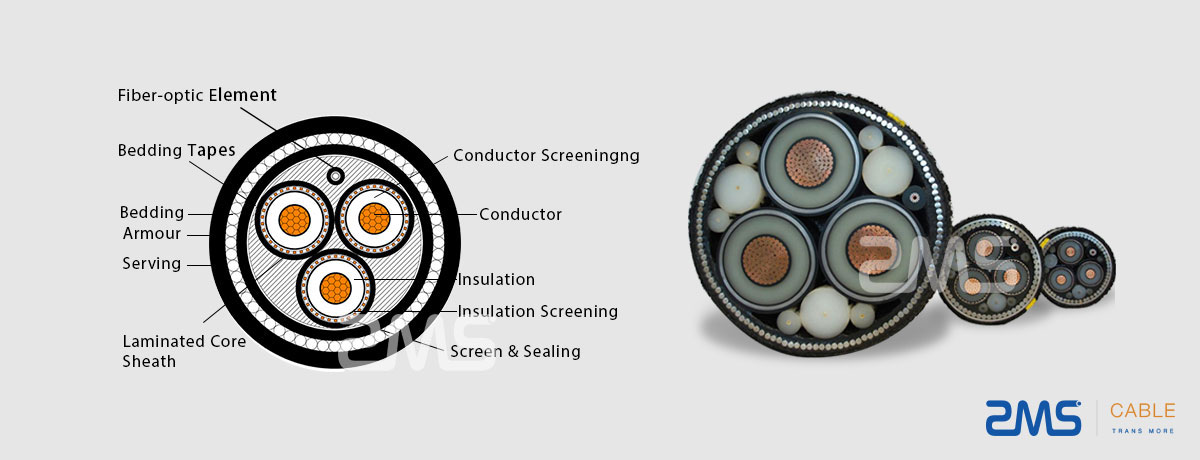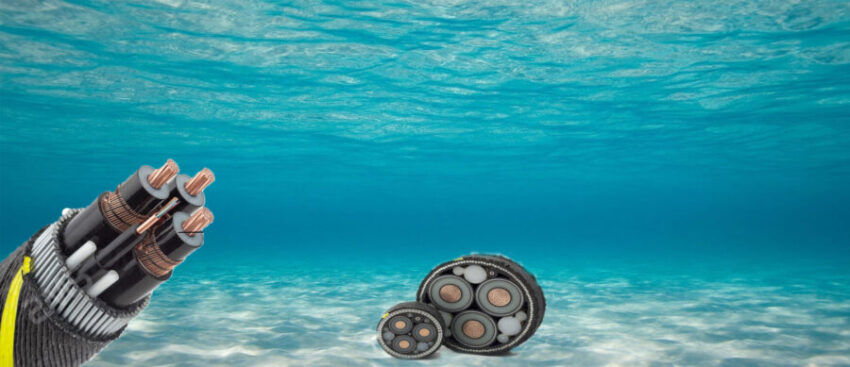Onderzeese communicatiekabels spelen een cruciale rol in het wereldwijde telecommunicatielandschap, dienen als de ruggengraat van internationale gegevensoverdracht. Deze kabels worden op de zeebodem gelegd, Continenten koppelen en de uitwisseling van enorme hoeveelheden informatie over de hele wereld mogelijk maken. In dit artikel, we zullen de technologie achter onderzeese communicatiekabels verkennen, hoe ze datasignalen verzenden, en het belang van deze systemen in de moderne communicatie.

Inzicht in onderzeese communicatiekabels
Wat zijn onderzeese communicatiekabels?
Onderzeese communicatiekabels zijn glasvezelkabels die specifiek zijn ontworpen voor onderwatertransmissie van datasignalen. Zij bestaan uit meerdere optische vezels, omgeven door beschermende lagen die ze beschermen tegen omgevingsfactoren zoals druk, temperatuur, en het zeeleven. Deze kabels kunnen zich duizenden kilometers over de oceanen uitstrekken, steden en landen met elkaar verbinden, waardoor ze essentieel zijn voor internet, telefoon, en televisiediensten.
Geschiedenis en ontwikkeling
De eerste succesvolle onderzeese kabel werd aangelegd 1850, aanvankelijk met behulp van koperdraad om telegrafische berichten te verzenden. In de loop van de decennia, technologie geëvolueerd, Dit leidde tot de introductie van glasvezelkabels in de jaren tachtig. Glasvezel gebruikt licht om gegevens te verzenden, waardoor een hogere bandbreedte en hogere snelheden mogelijk zijn in vergelijking met traditionele koperkabels. Vandaag, onderzeese communicatiekabels zijn van cruciaal belang voor de overdracht 95% van het intercontinentale dataverkeer.
Hoe onderzeese communicatiekabels werken
Structuur van onderzeese communicatiekabels
Onderzeese kabels bestaan doorgaans uit meerdere lagen, elk dient een specifiek doel:
- Kern (Optische vezels): In het midden van de kabel bevinden zich de optische vezels, Dit zijn dunne strengen glas of plastic die lichtsignalen doorgeven. Elke vezel kan gegevens met ongelooflijke snelheden over lange afstanden verzenden.
- Bekleding: Rondom de kern bevindt zich de bekleding, die van een ander soort glas is gemaakt. Deze laag reflecteert het licht terug naar de kern, ervoor zorgen dat de lichtsignalen niet ontsnappen en een efficiënte transmissie mogelijk maken.
- Buffercoating: De buffercoating beschermt de vezels tegen vocht en fysieke schade, zorgen voor extra sterkte.
- Sterkte leden: Deze zijn meestal gemaakt van staaldraden of Kevlar om de kabel te beschermen tegen externe druk en mogelijke schade door visserijactiviteiten of natuurrampen.
- Buitenjas: De laatste laag is de buitenmantel, wat extra bescherming biedt tegen het mariene milieu, inclusief zoutwatercorrosie en slijtage.

Gegevensoverdrachtproces
- Signaalgeneratie: Datasignalen worden gegenereerd op een transmissiestation, doorgaans op het land gelegen. Deze signalen worden met behulp van lasers omgezet in lichtpulsen.
- Transmissie via vezels: De lichtpulsen reizen door de optische vezels. Vanwege het principe van totale interne reflectie, het licht blijft in de kern besloten, waardoor het lange afstanden kan afleggen zonder significant signaalverlies.
- Repeaters: Voor zeer lange afstanden, repeaters worden op onderlinge afstanden langs de kabel geplaatst. Deze apparaten regenereren het optische signaal, het versterken ervan om ervoor te zorgen dat het zijn integriteit over lange tijdspannes behoudt. Moderne onderzeese kabels kunnen elk repeaters hebben 50-100 kilometer, afhankelijk van het ontwerp en de gebruikte technologie.
- Receptie: Aan de ontvangende kant, de lichtpulsen worden weer omgezet in elektrische signalen, die vervolgens door computers en andere apparaten kunnen worden verwerkt.
Sleuteltechnologieën in onderzeese communicatiekabels
- Multiplexing van golflengteverdeling (WDM): Met deze technologie kunnen meerdere datasignalen tegelijkertijd over dezelfde vezel worden verzonden door gebruik te maken van verschillende golflengten (kleuren) van licht. Hierdoor wordt de capaciteit van de kabel aanzienlijk vergroot.
- Multiplexing met dichte golflengteverdeling (DWDM): Een geavanceerde vorm van WDM, DWDM kan tientallen golflengten tegelijk verzenden, waardoor de gegevensdoorvoer en efficiëntie dramatisch worden verbeterd.
- Foutcorrectieprotocollen: Om de gegevensintegriteit te garanderen, onderzeese kabels gebruiken foutcorrectieprotocollen die eventuele fouten tijdens de transmissie identificeren en corrigeren.
Belang van onderzeese communicatiekabels
Mondiale connectiviteit
Onderzeese communicatiekabels verbinden continenten en landen, het faciliteren van mondiale communicatie. Ze ondersteunen internetdiensten, internationale telefoongesprekken, en zelfs uitzendingen voor televisie- en radionetwerken. Zonder deze kabels, de wereld zou veel minder onderling verbonden zijn, en veel moderne gemakken zouden onmogelijk zijn.

Economische impact
De financiële gevolgen van onderzeese communicatiekabels zijn diepgaand. Ze ondersteunen de digitale economie, waardoor bedrijven efficiënt over de grenzen heen kunnen opereren. De aanwezigheid van betrouwbare internetconnectiviteit bevordert de economische groei, innovatie, en werkgelegenheidscreatie in diverse sectoren.
Ondersteuning van opkomende technologieën
Onderzeese kabels maken ook de groei van opkomende technologieën mogelijk, zoals cloudcomputing, streamingdiensten, en het internet der dingen (IoT). Naarmate meer apparaten verbonden raken, de vraag naar bandbreedte neemt toe, waardoor robuuste onderzeese kabelsystemen belangrijker dan ooit zijn.
Uitdagingen en overwegingen
Onderhoud en reparatie
Het onderhouden en repareren van onderzeese communicatiekabels is een complexe taak. Onderwateromgevingen brengen tal van uitdagingen met zich mee, inclusief barre weersomstandigheden, onderwaterstromingen, en mogelijke schade door visnetten of scheepsankers. Gespecialiseerde schepen uitgerust met geavanceerde technologie worden gebruikt om beschadigde kabels te lokaliseren en te repareren, zorgen voor minimale verstoring van de dienstverlening.
Milieu-impact
De installatie en onderhoud van onderzeese kabels kan gevolgen voor het milieu hebben, inclusief verstoring van mariene habitats. Daarom, zorgvuldige planning en beoordeling zijn essentieel om deze effecten te verzachten. Regelgevende instanties vereisen vaak milieueffectstudies voordat kabelprojecten worden goedgekeurd.
Beveiligingsproblemen
Omdat onderzeese kabels een enorme hoeveelheid gevoelige gegevens vervoeren, ze zijn kwetsbaar voor veiligheidsbedreigingen. Cyberaanvallen die zich op deze infrastructuren richten, kunnen catastrofale gevolgen hebben voor de mondiale communicatie. Er worden inspanningen geleverd om de veiligheid van onderzeese communicatiesystemen te verbeteren, inclusief encryptie- en monitoringtechnologieën.

Toekomst van onderzeese communicatiekabels
Toenemende vraag
Nu de wereld steeds afhankelijker wordt van digitale communicatie, de vraag naar bandbreedte blijft stijgen. Onderzeese communicatiekabels zullen een cruciale rol spelen bij het voldoen aan deze vraag, wat leidt tot investeringen in nieuwe kabelsystemen en upgrades van bestaande.
Vooruitgang in technologie
Technologische vooruitgang staat op het punt de mogelijkheden van onderzeese communicatiekabels te vergroten. Innovaties zoals multiplexing in de ruimte en kwantumcommunicatie zouden de datatransmissiesnelheden en de veiligheid verder kunnen verhogen.
Duurzaamheidsinitiatieven
Naarmate het bewustzijn over milieukwesties groeit, Ook de industrie zet in op duurzaamheid. Toekomstige onderzeese kabelprojecten kunnen milieuvriendelijke materialen en methoden gebruiken om hun ecologische voetafdruk te verkleinen.
Onderzeese communicatiekabels vormen een hoeksteen van de moderne mondiale communicatie, het verzenden van enorme hoeveelheden gegevens over de oceanen en het verbinden van mensen over de hele wereld. Begrijpen hoe deze kabels werken, hun betekenis, en de uitdagingen waarmee zij worden geconfronteerd, biedt waardevolle inzichten in de infrastructuur die ons digitale leven ondersteunt. Terwijl de technologie blijft evolueren, onderzeese communicatiekabels zullen zich ongetwijfeld aanpassen om te voldoen aan de groeiende eisen van een steeds meer verbonden wereld.


